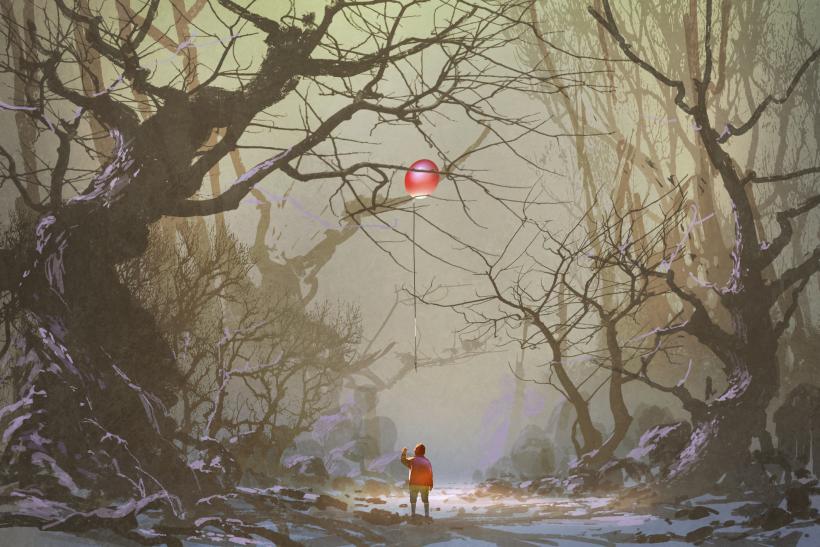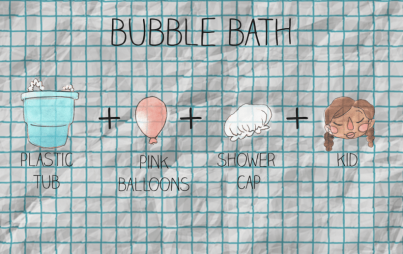
When you think of scary movies, Freddy Krueger’s crusty claw, Samara’s damp hair, or the eerie noise from The Grudge might come to mind. Famous paintings? Not so much.
Visual art has, however, inspired the people behind the cameras. Directors and other movie magicians alike have used their platforms to bring paintings to life, referencing famous art from the past and pulling visual inspiration for their feature films.
Read on for some of the scary movies that flawlessly turn picture-perfect paintings into movie magic.
It
The painting in It (2017) resembles Young Woman of the People, a famous 1918 work by Amedeo Modigliani. During an interview with The New York Times, Director Andy Muschietti reveals how he conceived the creepy scene in which the painting comes alive and menaces a young boy: “It’s a literal translation of a very personal childhood fear. In my house, there was a print of a Modigliani painting that I found terrifying. And the thought of meeting an incarnation of the woman in it would drive me crazy.”
Muschietti then goes into detail about what irks him most about Modigliani’s work: “He often does these portraits with elongated characters. His vision of humans were with elongated necks, crooked faces and empty eyes most of the time,” he explains. “It was so deformed that as a child, you don’t see that as an artist’s style. You see it as a monster.”
It Comes At Night
In It Comes At Night (2017), Pieter Bruegel the Elder’s macabre painting The Triumph of Death (1562) is repeatedly shown throughout the film. Director Trey Edward Shults opens up about using this particular piece in his film in an Entertainment Weekly interview:
"Growing up, my mom spent a lot of time at my grandparent’s house, which was a ranch house that was a big inspiration for the house in the movie. My grandfather was a prisoner of war during World War II. And I remember the walls of his home felt like him internally: weapons from the war interpreted with family photos. And above the fireplace were two Medieval weapons and Bruegel’s Hunters in the Snow. Then I got a Bruegel book and saw The Triumph of Death. It haunted me in the best way. It was a hellscape of all my fears. Then I read that Breugel was inspired to paint it by the plague in Europe. The Black Death. And I just thought how perfect that would be for the movie.”
You Might Also Like: No Scream Queens Allowed: Our 11 Favorite Women Of Horror Films
The Exorcist
René Magritte’s painting The Empire of Lights (1953-1954) was the inspiration for William Friedkin’s The Exorcist (1973) movie poster as well as the famous scene in the film where Father Merrin first appears outside of possessed Regan MacNeil's home. The painting and movie poster both display the visual of a sky and a lone street lamp, except the sky in the painting is blue and inviting, and the sky in the poster is pitch-black and foreboding.
We can only surmise what is happening in Magritte's spooky-looking room. Fans of The Exorcist, however, know all too well the hell that Father Merrin is about to enter when he walks into Regan's room to expel the demon. According to Taste of Cinema, “René Magritte’s paintings make no logical sense, seeing as the bottom half of the picture collides with the top half of the picture (therefore the title), which is another element that fits very well with the film: the unexplainable elements in life, whether it be the lights or a young girl possessed by a demon.”
Pan’s Labyrinth
The grim Saturn Devouring His Son is one of Franciso Goya's 14 Black Paintings, which were directly painted onto the walls of his house sometime between 1819 and 1823. This image inspired Guillermo Del Toro as he was conceiving Pan's Labyrinth (2006):
"Goya was an obvious reference, specifically with regards to the character of the Pale Man,” Del Toro says. “There is a scene in which the Pale Man bites the heads off the fairies. That comes straight from Goya’s painting of Saturn devouring his son."
Scream
According to the BBC, the ghost face mask in Scream (1996) was inspired by Edvard Munch's famously existential painting, The Scream (1893). The Ghostface mask was originally created as a Halloween costume by the New York-based novelty company Fun World in 1991. In an interview with The Hollywood Reporter, Wes Craven, the director of Scream, swears the success of his movie on the mask: “No other mask would have done the trick,” says Craven. "I knew it in my bones that [Ghostface] was a unique find, and I had to convince the studio that they had to go the extra mile to get it."
Psycho
Alfred Hitchcock used Edward Hopper’s painting House by the Railroad (1925) as a model for the famous Bates house in Psycho (1960). Psycho screenwriter Joseph Stefano also considers Norman Bates to be a living painting: "I told him [Perkins] that I felt that Norman Bates, if he were a painting, would be painted by Hopper, and he agreed. So we had kind of that discussion, writer and actor, about the character. He had an incredible grasp on Norman Bates and the situation that he was in. I think Tony Perkins must have known what it was like to be trapped. In some way, somehow, he knew what trapped meant, just as I did. And, while we didn’t talk about that aspect of it, it was clear to me early on that he was becoming Norman Bates."








